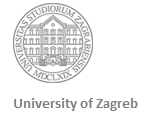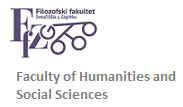Home » 8. semestar – SMJER LINGVISTIKA
Category Archives: 8. semestar – SMJER LINGVISTIKA
Accents of English
Course title: Accents of English Course coordinator: Dr Višnja Josipović Smojver Instructor: Mirta Stamenić, assistant ECTS credits : 5 Language: English Semester: 2nd (summer) Status: elective Form of instruction: 2 seminar classes a week Enrolment requirements: enrolment in the 8th semester Exam: none Student obligations: Each student will be obliged to choose and present one […]
History of the English Language
Course title: History of the English Language Summer term ECTS: 5 points Course convenor: Dr Mateusz Milan Stanojević Lecturer: Dr Mateusz Milan Stanojević Language: English Term: Second term of graduate studies Requisites: Attending this course does not require any requisites, except being enrolled in the term in which the course is given. Course format: 4 […]
History of the English Language (archive)
Course title: History of the English Language Summer term ECTS: 5 points Course convenor: Dr Mateusz Milan Stanojević Lecturer: Dr Mateusz Milan Stanojević Language: English Term: Second term of graduate studies Requisites: Attending this course does not require any requisites, except being enrolled in the term in which the course is given. Course format: 4 […]
Discourse analysis – language of communication technologies
Course title: Discourse analysis – language of communication technologies Name of course coordinator: Prof. Milena Žic Fuchs Name of lecturer: Asst. Prof. Marina Grubišić Number of credits: 5 Language of instruction: English Semester: 2nd (spring) Status: elective Type of course: 2 periods, seminar Prerequisites: All basic linguistics disciplines Assessment method: Individually or in small […]
History of the English language (archive)
Course title: History of the English LanguageSummer term: 2012-2013ECTS: 5 pointsCourse convenor: Professor Milena Žic FuchsLecturer: Vlatko BrozLanguage: EnglishTerm: Second term of graduate studiesRequisites: Attending this course does not require any requisites, except being enrolled in the term in which the course is given.Course format: 4 lecture classes a weekObjective: Gaining an insight into […]
Cognitive linguistics
Course title: Cognitive linguistics ECTS credits: 5 Instructor: Professor Milena Žic Fuchs Language: English Semester: I or II Uvjeti: Položen ispit iz Sintakse i Semantike engleskoga jezika Oblik nastave: 4 sata predavanja CILJ KOLEGIJA: Cilj je ovoga kolegija upoznati studente s osnovnim postavkama kognitivne lingvistike, točnije kognitivne semantike i kognitivne gramatike. SADRŽAJ KOLEGIJA: Kolegij se […]
Academic Writing 2
Course name: Academic Writing 2 Instructors: Dr Alexander Douglas Hoyt, senior lecturer ; Dr Kristijan NIkolić, senior lecturer; Tea Raše ECTS points: 5 Language of instruction: English Semester: II. (summer) Prerequisites: Academic writing 1 (a pass mark) Form: combination of workshop and seminar, 4 hours a week Grading/marking: active participation in the class, written assignments, […]
Linguistic seminar: Semantics
Course title: Linguistic seminar: Semantics ECTS credits: 5 Course coordinator: Professor Milena Žic Fuchs Instructor: Assoc. Prof. Mateusz-Milan Stanojević; Dr. Janja Čulig Suknaić, postdoc Language: English Semester: 2nd Form of Instruction: 2 seminars per week Objectives: The aim of this course is to introduce students to the analysis of meaning. Upon its completion, students will be […]



